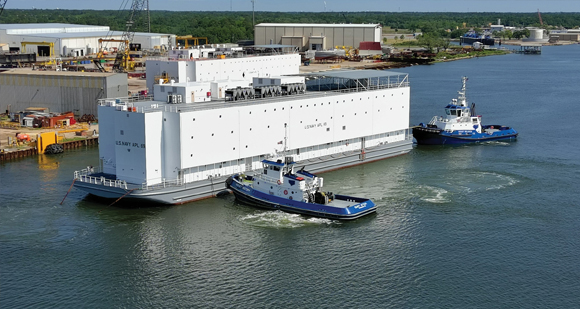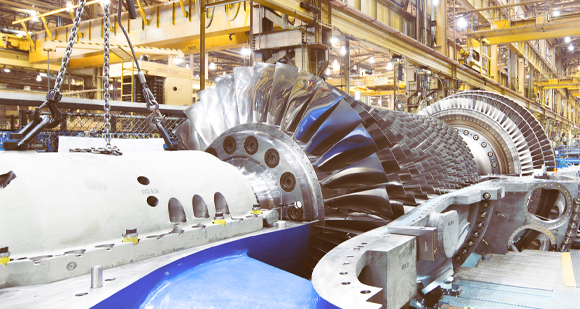|



|
FROM SITE SELECTION
MAGAZINE, JULY 2022 ISSUE
|

|
AEROSPACE
Lack of a spaceport doesn’t mean regions cannot grow and attract space
tech companies, writes Brian Darmody, chief strategy officer at the
Association of University Research Parks.
|
|

|
INVESTMENT PROFILE: MISSISSIPPI
The Mississippi Development Authority’s new Select Sites grant program
is one among many tools the state is deploying to ensure corporate
investors are maximizing their ROI and speed to market.
|
|
  |

|
FORTUNE 500 No. 1 Walmart continues work on a new home
office campus across 350 acres in Bentonville, Arkansas, that is
opening in phases through
2025.
Rendering courtesy of Walmart
|
|
Among the more revelatory aspects of FORTUNE’s presentation of the 2022 FORTUNE 500
are a map showing those companies’ geographic distribution across the
United States, and a table below that showing the rise or fall of each
company’s fortunes via its historic ranking in or out of the 500 going
back to 1995. Hovering up and down on the Y axis produces some
compelling adjacencies, such as this year’s No. 210 Uber Technologies, a
relative infant in the rankings, just below No. 209 Goodyear Tire &
Rubber, whose path extends back every year on the chart but whose
ranking has steadily descended from a 1995 high of No. 81.
Among the steepest climbers is No. 27 Meta Holdings (Facebook), which
entered the rankings for the first time in 2013 at No. 482 and then
bounded up the stairs with big leaps every year since. Similarly, No. 8
Google has risen from No. 253 in 2006. Steadier upward paths have been
carved by such companies as Comcast, Intel and AmerisourceBergen.
As for geographic agglomeration, strong FORTUNE 500 clusters occupy the
East Coast megalopolis called “BosWash” by futurist Herman Kahn in 1967;
a triangle roughly formed by Chicago, Detroit and Louisville; and a line
down the virtual center of the country from the Twin Cities through the
huge circle representing No. 1 Walmart emanating from Arkansas to the
healthy number of companies in every major Texas city. — Adam
Bruns
|
|
|
2022 MISSISSIPPI
DEVELOPMENT GUIDE
|

|
SHIPBUILDING
Shipbuilders for the U.S. Navy and Coast Guard embark on large expansion
projects.
|
|
 
|
Indiana
Through a unique lease arrangement between medical device companies,
Michigan-based Autocam Medical is moving operations into a former
Medtronic facility as the latter company moves manufacturing to other
sites. “As Medtronic exits the facility, we recently signed a letter of
intent with Autocam Medical Device Holdings LLC to lease the building in
phases,” Mike Hagenson, Medtronic senior state government affairs
manager, wrote to Warsaw Mayor Joe Thallemer in an email. “Autocam
Medical has expressed interest in potentially hiring former Medtronic
Warsaw employees as Autocam Medical’s presence in Warsaw grows.” In a
statement provided to the Warsaw Times-Union earlier this year, Autocam
Medical CEO John C. Kennedy said, “Upon hearing the Medtronic Warsaw
news, we thought this could be a great opportunity for Autocam Medical,
as well as the Medtronic employees who will be impacted by this change.
Autocam Medical has grown significantly over the past few years. Our
biggest impediment to maintaining this growth is hiring skilled
personnel. Therefore, we are extremely excited about the Medtronic
opportunity because it allows us to provide highly trained individuals
with a similar work experience and great pay and benefits.”
Nebraska
This project in Lincoln is part of an overall $66 million investment
Duncan announced earlier his year at its existing MRO locations in
Battle Creek, Michigan, and Lincoln. “The demand for the safety and
flexibility that business aviation travel provides has continued to
increase, as has the average size of business aircraft,” said Jeff Lake,
President of Duncan Aviation. “This results in increased demand for the
hangar space required to complete requested airframe, engine, interior,
paint and avionics modifications for the business aircraft fleet.
Looking to the future, we know that in order to meet current customer
requests and needs, Duncan Aviation will need more hangar facilities.”
When construction is complete in fall 2023, Duncan Aviation will have
769,000 sq. ft. of hangar space and shop, office, and storage areas in
Lincoln. The company also maintains a service facility in Provo, Utah.
|
|
|
SITE SELECTION
RECOMMENDS
|

|
A gas turbine in GE Power’s plant in Greenville, South Carolina
Photo courtesy of GE Power
|
|
What does the footprint of GE’s U.S. facility portfolio look
like? Judging by the company’s compelling “Voices” website, it looks a lot like
the United States population, with a pronounced pronation
east of the Mississippi. As of the end of 2021, the company
and its 55,200 employees maintained 77 manufacturing sites
across the nation, 229 other GE facilities, and worked with
27,220 suppliers. The company’s corporate news operation is
legendary, having employed such esteemed communicators as
Kurt Vonnegut, among others. Today is no different, as
evidenced by this 2020 story about GE’s lean
journey at its turbine plant in Greenville, South Carolina,
where “the team cut the distance a part had to travel from
three miles to a mere 165 feet.” In 2017 we interviewed GE VP John Lammas,
the chief technology officer for GE Power, about that plant,
the Upstate South Carolina region and the company’s
innovation leadership.
|
|
|

|
Photo by Shawn Miller courtesy of
LOC
|
|
The Library of Congress recently announced that visitors can walk onto
the floor of the Main Reading Room in the library’s Thomas Jefferson
Building on Thursday evenings during the new Live at the Library from 5
to 8:30 p.m. Free timed-entry passes are required to enter the Thomas
Jefferson Building. (Visit loc.gov/visit to reserve a pass for Live at the
Library.) “The Library of Congress is the world’s largest library,
offering access to the creative record of the United States — and
extensive materials from around the world — both on-site and online,”
says the LOC website, noting that the institution is the main research
arm of the U.S. Congress and the home of the U.S. Copyright Office.
|
|
|
|

